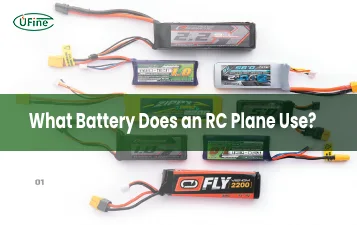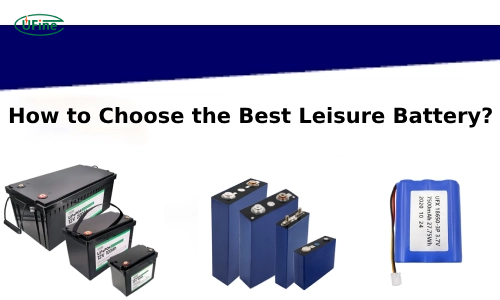Whether planning a camping trip, a boating excursion, or a day off the grid, a leisure battery can give you the necessary power to run your appliances and devices. In this comprehensive guide, we will explore the different aspects of leisure batteries to help you make an informed decision and choose the best one for your needs.
Part 1. Leisure battery
A leisure battery, also known as a deep cycle or marine battery, is specifically designed to provide a steady and consistent power supply over an extended period. Unlike regular car batteries, designed to deliver a high burst of energy for ignition, manufacturers build leisure batteries to discharge less power over a more extended period, making them ideal for leisure activities and off-grid adventures.
Pros:
- Deep Discharge Capability: Manufacturers design leisure batteries to withstand deep discharges without significantly affecting their overall performance or lifespan. This makes them suitable for applications where a regular battery might fail.
- Longer Lifespan: Manufacturers build leisure batteries to withstand multiple charge and discharge cycles, resulting in a longer lifespan than other battery types.
- Versatility: Leisure batteries serve various leisure applications, including powering lights, appliances, portable fridges, and even small electric motors.
Cons:
- Heavy and Bulky: Leisure batteries tend to be heavier and bulkier than regular car batteries due to their construction and the materials used. This can make them less portable and more challenging to handle.
- Maintenance Requirements: Proper maintenance is crucial to ensure a leisure battery’s longevity and optimal performance. Regular checks on the battery’s charge level, cleaning of terminals, and appropriate charging techniques are necessary.
Part 2. What kinds of leisure batteries are good?
When selecting a suitable leisure battery, several factors come into play. Here are a few key aspects to consider:
- Battery Capacity: Battery capacity is essential when choosing a leisure battery. It refers to the amount of electrical charge the battery can store and deliver, measured in ampere-hours (Ah). A higher Ah rating indicates a larger capacity and longer runtime.
- Voltage: Leisure batteries typically come in 12V or 6V variants. 12V batteries are more common and compatible with a wide range of appliances. On the other hand, 6V batteries are often used in series to achieve a higher overall voltage.
- Cycle Life: Cycle life refers to the number of charge and discharge cycles a battery can endure before its performance begins to degrade. A leisure battery with a higher cycle life will last longer and provide consistent power over an extended period.
- Battery Type: There are different types of leisure batteries available, including flooded lead-acid batteries, gel batteries, AGM (Absorbent Glass Mat) batteries, and lithium leisure batteries. Each type has advantages and considerations, such as maintenance requirements and sensitivity to overcharging.
Part 3. What different types of leisure batteries are available to you?
When it comes to leisure batteries, there are several types you can choose from to power your recreational activities. Let’s explore them:
1. Flooded Lead-Acid Batteries
Flooded lead-acid batteries are the tried-and-true workhorses of the leisure battery world. They use lead plates submerged in sulfuric acid to generate power. These batteries are known for their reliability and affordability. However, they require regular maintenance, including checking and refilling the electrolyte levels.
2. Gel Batteries
Gel batteries are sealed lead-acid batteries that use a gelified electrolyte. The gel prevents spillage, making it safer, especially in confined spaces or moving vehicles. Gel batteries are ideal for applications where vibration resistance and deep cycling capabilities are essential.
3. AGM (Absorbent Glass Mat) Batteries
AGM batteries are similar to gel batteries but use a fiberglass mat to absorb the electrolyte. This design allows for faster charging and discharging rates compared to gel batteries. AGM batteries are maintenance-free and are resistant to vibration and shock, making them suitable for demanding applications.
4. Lithium Leisure Batteries
Lithium leisure batteries are the latest innovation in the leisure battery market. They offer several advantages over traditional lead-acid batteries, including higher energy density, lighter weight, and longer cycle life. Lithium batteries also charge faster and can withstand deeper discharges without damage, making them ideal for high-performance applications.
5. Lead Crystal Semi-Traction Batteries
Lead crystal batteries are a newer type of battery that offers improved performance and longer lifespan compared to traditional lead-acid batteries. They use a crystalline structure to store energy, providing greater efficiency and reliability. Lead crystal batteries are also maintenance-free, making them a convenient option for leisure applications.
6. Starter Batteries
Manufacturers design starter batteries to provide high bursts of power to start engines quickly. They are unsuitable for deep cycling and are primarily used in vehicles and boats requiring frequent engine starts.
7. Dual-Purpose Batteries
Manufacturers design dual-purpose batteries to serve both starting and deep cycling purposes. They balance cranking power and deep cycling capabilities, making them versatile for various applications, such as marine use and RVs.
8. Deep Cycle Batteries
Manufacturers specifically design deep-cycle batteries to provide sustained power over extended periods. They are ideal for applications where frequent deep discharges are expected, such as off-grid solar systems and electric trolling motors.
9. Tubular Plate Batteries
Tubular plate batteries feature tubular lead plates with enhanced durability and deep cycle capabilities. They commonly find use in renewable energy systems and industrial applications where reliability and long-term performance are crucial.
10. Nickel-Cadmium (Ni-Cd) Batteries
Nickel-cadmium batteries are known for their high discharge rates, wide operating temperature range, and long service life. Applications where reliability is critical, such as aviation and telecommunications, commonly utilize them.
Part 4. How do you decide what type of leisure battery you need?
Deciding on the correct type of leisure battery for your needs involves considering several key factors:
1. Power Requirements:
Determine the power requirements of your appliances and devices powered by the battery. Calculate the total power consumption of watts or amps to estimate the battery capacity you’ll need.
Power Requirements (Watts)=Voltage (Volts)×Current (Amps)
2. Usage Patterns:
Consider how you’ll be using the battery. Will you use it primarily for occasional weekend trips or extended off-grid adventures? Understanding your usage patterns will help determine the battery’s capacity and cycle life requirements.
3. Battery Capacity:
Choose a battery with an appropriate capacity (measured in Ah or ampere-hours) to meet your power needs. Higher capacity batteries provide more runtime between charges but may also be heavier and more expensive.
4. Battery Type:
Select the battery type that best suits your requirements. Lead-acid batteries are cost-effective but require maintenance, while lithium batteries offer superior performance and longer lifespan but come with a higher upfront cost.
5. Cycle Life:
Consider the battery’s cycle life, which refers to the number of charge and discharge cycles it can endure before its performance degrades. A battery with a higher cycle life will last longer and provide more reliable power.
6. Charge Rate:
Assess the battery’s charge rate, indicating how quickly it can charge. Some batteries, like lithium batteries, have faster charging capabilities than lead-acid batteries, which can be beneficial if you need to recharge frequently or have limited charging time.
7. Depth of Discharge:
Consider the depth of discharge (DoD) of the battery, which refers to the percentage of the battery’s capacity that it has discharged. Manufacturers design deep-cycle batteries to handle deeper discharges without damage, making them ideal for applications requiring frequent deep discharges.
8. Weight and Size:
Consider the weight and size of the battery, especially if you have space or weight constraints in your vehicle or equipment. Lithium batteries are typically lighter and more compact than lead-acid batteries, making them ideal for limited weight and space applications.
9. Budget:
Lastly, consider your budget when choosing a leisure battery. While lithium batteries may have a higher upfront cost, they often provide better long-term value due to their superior performance and longer lifespan.
Part 5. What are the different categories of leisure batteries?
The National Caravan Council (NCC) categorizes leisure batteries into three classes based on their capacity, life cycle, and intended applications. These classifications help consumers choose the most suitable battery for their specific needs. Let’s explore each class:
- Class A
Class A leisure batteries have a minimum capacity of 90Ah and a minimum life cycle of 350 cycles. Manufacturers design these batteries for motorhomes frequently used without relying on electrical hook-ups. They provide ample power for essential appliances and accessories, ensuring reliable performance during extended trips without access to external power sources.
- Class B
Class B leisure batteries also have a minimum capacity of 90Ah but a slightly lower minimum life cycle of 200 cycles. These batteries are ideal for motorhomes with higher power consumption levels and often rely on electrical hook-ups for extended periods. They offer sufficient power reserves to support various electrical appliances and accessories, ensuring uninterrupted comfort during leisure travels.
- Class C
Class C leisure batteries have a minimum capacity of 60Ah and a lower minimum life cycle of 70 cycles. Manufacturers tailor these batteries for motorhomes with lower power consumption levels that frequently rely on electrical hookups. While they provide less power than Class A and B batteries, they are suitable for powering essential appliances and accessories during short trips or stays at campsites with electrical facilities.
Part 6. FAQs
-
Which is the best leisure battery to buy?
The best leisure battery to buy is often considered lithium leisure batteries, specifically lithium iron phosphate (LiFePO4). They offer superior energy density, weight, charging speed, and cycle life performance compared to traditional lead-acid batteries. -
What are the best leisure batteries for off-grid?
The best leisure batteries for off-grid applications are lithium or deep-cycle batteries. Lithium batteries, especially lithium iron phosphate (LiFePO4) batteries, are known for their high energy density and long cycle life. They are ideal for off-grid use, where reliable power is crucial. Deep cycle batteries, such as AGM or gel batteries, are also suitable for off-grid applications because they provide sustained power over extended periods. -
Are lithium leisure batteries better?
Lithium leisure batteries, particularly lithium iron phosphate (LiFePO4), are generally better than lead-acid batteries. They offer higher energy density, lighter weight, faster charging times, and longer cycle life, making them superior in performance and durability. -
Is a higher Ah leisure battery better?
A higher Ah (ampere-hour) leisure battery is usually better, as it indicates a larger capacity and longer runtime. However, it’s essential to consider other factors, such as weight, size, and cost, when choosing the correct battery for your specific application. For example, lithium batteries typically have higher Ah ratings. Still, they may also come with a higher upfront cost than lead-acid batteries.
Related Tags:
More Articles

What type of battery does an RC plane use?
Learn what battery RC planes use, how to choose, charge, and maintain them. A complete beginner guide in simple words.
12V 20Ah Battery Runtime Guide by Load & Chemistry
Discover how long a 12V 20Ah battery lasts under different loads. Learn key factors, runtime calculations, and battery type comparisons.
How Long Can a 21700 Battery 5000mAh Be Used?
Discover how long a 21700 battery 5000mAh lasts in real use. Learn about runtimes, device compatibility, and tips to extend battery performance.
Panasonic 18650 Battery Models Guide
Explore popular Panasonic 18650 battery models, specs, and uses. Compare NCR18650B, GA, PF, and more to find the best cell for your project.
[Full Expert Guide] 18650 LiFePO4 Battery Explained
Explore the features, advantages, and best uses of 18650 LiFePO4 batteries. Find out how they compare to standard lithium-ion cells.




